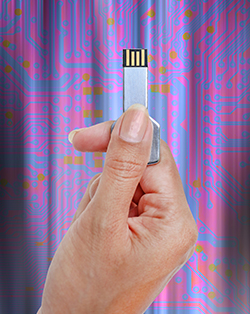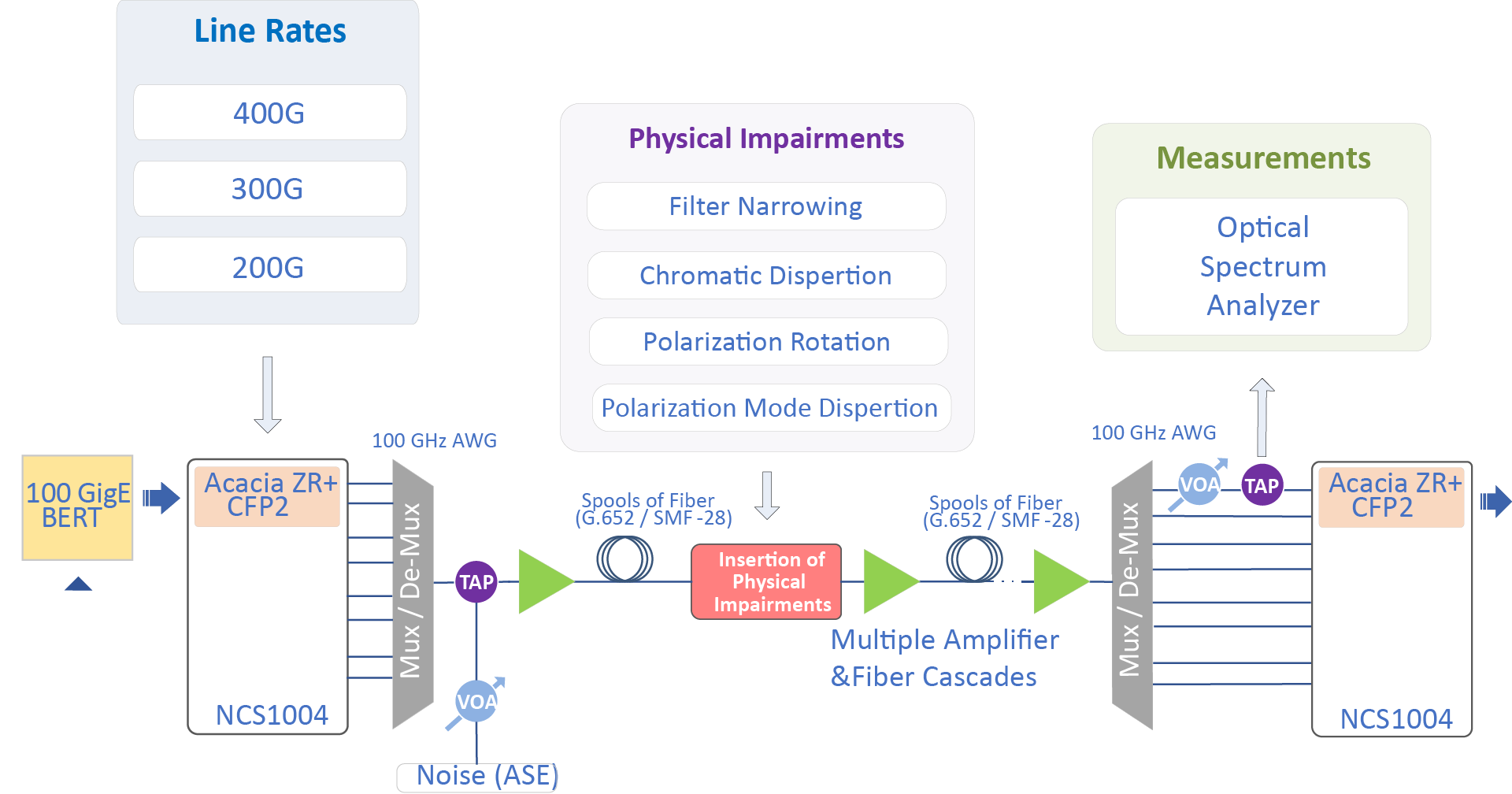Go Small to Go Big with 400 Gig Line Side Pluggables
By: Art Nichols, John Nishimoto, Kim Papakos

We’re living in an era of data explosion. Data center IP traffic is estimated to grow to 20.6 zettabytes by the end of 2021. As the demand for bandwidth continues to grow, operators must augment their network capacity, which in turn requires more space, power, and capital.
To help offset the cost increases from this growth, data center customers and operators have leveraged the benefits of smaller size and lower power utilization from small form factor pluggables to efficiently grow their campus networks. The expanded application of ZR and ZR+ technology to provide high-density pluggable coherent optics has increased data speeds while decreasing size.
A leap forward
A decade ago, a five-by-seven-inch equipment card that plugged into a large equipment chassis that used to take up five to ten rack units supported 40G. Today 400G can be achieved on a plugin that is 3.5 inches long and less than an inch wide in a single rack unit (1.75-inch-high) “pizza box.” Small form-factor pluggables (SFP) that plug into these ultra-compact “pizza boxes” have been used for several years now. The latest increase in capacity performance from quad small form-factor pluggable dual density (QSFP_DD) modules provides the smallest form factor with the highest port density per rack. More importantly, the power consumption of these coherent pluggables ranges from 80 to 90 percent efficiency gains when compared with traditional deployments. Moreover, the coherent pluggables are expected to yield an overall cost reduction calculated from 50 to 75 percent.
The coherent pluggables are a direct result of a multi-generation aggressive challenge to achieve as much vertical integration as possible. Driving more silicon into these products reduces the packaging and increases the level of optical and DWDM integration. The 3D stacking of silicon allows a single optical-electrical component that has DSP, the photonic integrated circuit, and drivers all in a single device. The pluggables showcase the latest in 7 nm manufacturing technology in addition to tight silicon photonics vertical integration. Integrating as many sub-sections as possible (DSP, TIA, modulator, SERDES, framer, and so on) into a single chip results in a smaller and more power-efficient coherent transceiver capable of being fitted in a CFP2 package with little to no performance trade-offs relative to its larger SLED-based counterparts. But does this integration and miniaturization have a detrimental impact on performance?

Figure 1: The CFP2 characterization and testing methodology
click to enlarge
Long-haul network operators confront some of the same challenges that data center operators face, and applying these coherent pluggables to long-haul network applications could help alleviate similar space, heat, power, and cost challenges. But does this technology, which has been so beneficial for campus deployments, also work over long distances? Spoiler alert: yes. Windstream conducted trials to prove the validity of expanding the use of 400G line side pluggable technology for long-distance network applications.
The field trials
The standard of “ZR+” that was used for the field trials was OpenROADM. This standard represents a superset of all other interoperable standards, allowing for the highest flexibility but also providing instant power-level compatibility with the rest of



















